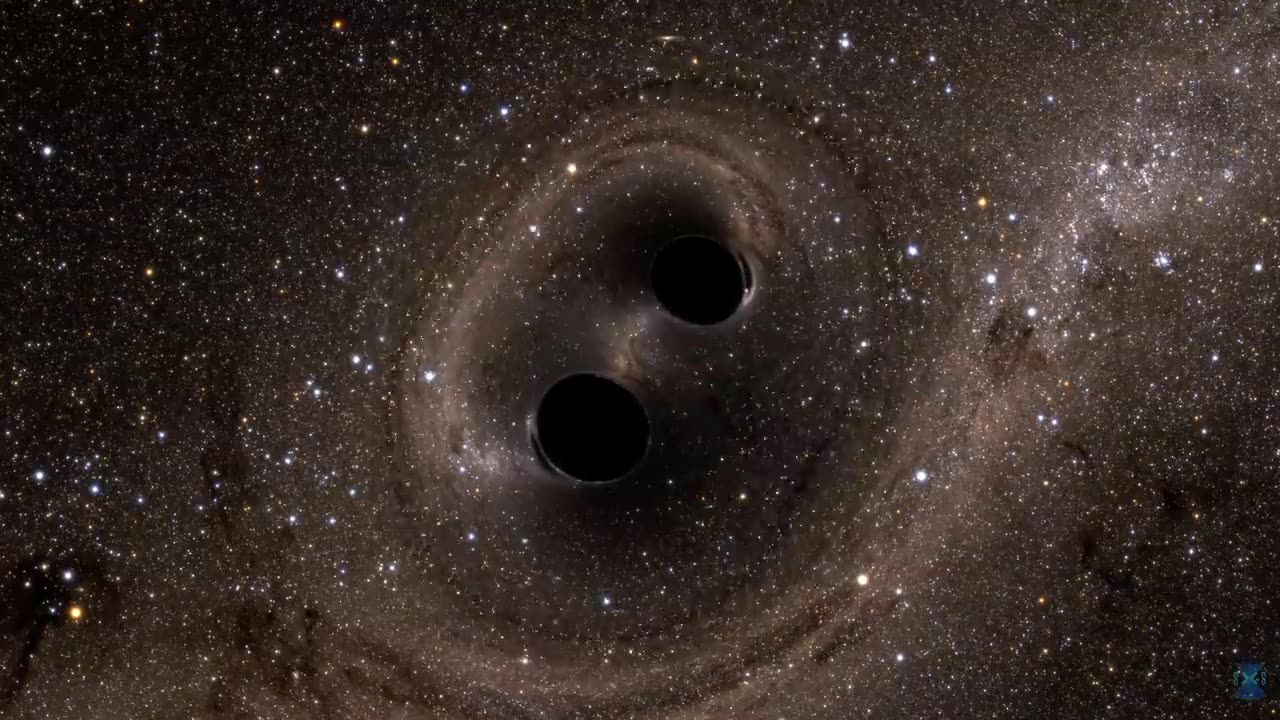Premium Only Content

Two Black Holes Merge into One
A computer simulation shows the collision of two black holes, a tremendously powerful event detected for the first time ever by the Laser Interferometer Gravitational-Wave Observatory, or LIGO. LIGO detected gravitational waves, or ripples in space and time generated as the black holes spiraled in toward each other, collided, and merged. This simulation shows how the merger would appear to our eyes if we could somehow travel in a spaceship for a closer look. It was created by solving equations from Albert Einstein's general theory of relativity using the LIGO data.
The two merging black holes are each roughly 30 times the mass of the sun, with one slightly larger than the other. Time has been slowed down by a factor of about 100. The event took place 1.3 billion years ago.
The stars appear warped due to the incredibly strong gravity of the black holes. The black holes warp space and time, and this causes light from the stars to curve around the black holes in a process called gravitational lensing. The ring around the black holes, known as an Einstein ring, arises from the light of all the stars in a small region behind the holes, where gravitational lensing has smeared their images into a ring.
The gravitational waves themselves would not be seen by a human near the black holes and so do not show in this video, with one important exception. The gravitational waves that are traveling outward toward the small region behind the black holes disturb that region’s stellar images in the Einstein ring, causing them to slosh around, even long after the collision. The gravitational waves traveling in other directions cause weaker, and shorter-lived sloshing, everywhere outside the ring.
This simulation was created by the multi-university SXS (Simulating eXtreme Spacetimes) project. For more information, visit http://www.black-holes.org.
-
 9:05
9:05
Bearing
19 hours agoJaguar's Woke New Ad is SHOCKINGLY Bad 😬
1.78K55 -
 7:55
7:55
Chris From The 740
11 hours ago $0.01 earnedWill The AK Project Function - Let's Head To The Range And Find Out
1.3K5 -
 2:39
2:39
BIG NEM
8 hours agoHygiene HORROR: The "Yurt Incident"
431 -
 3:19:21
3:19:21
Price of Reason
11 hours agoHollywood Celebrities FLEE the US After Trump Win! Wicked Movie Review! Gaming Journos MAD at Elon!
53.1K10 -
 3:55:45
3:55:45
Alex Zedra
6 hours agoLIVE! Last Map on The Escape: SCARY GAME.
60.7K3 -
 1:14:07
1:14:07
Glenn Greenwald
11 hours agoComedian Dave Smith On Trump's Picks, Israel, Ukraine, and More | SYSTEM UPDATE #370
160K156 -
 1:09:07
1:09:07
Donald Trump Jr.
14 hours agoBreaking News on Latest Cabinet Picks, Plus Behind the Scenes at SpaceX & Darren Beattie Joins | TRIGGERED Ep.193
193K577 -
 1:42:43
1:42:43
Roseanne Barr
9 hours ago $58.95 earnedGod Won, F*ck You | The Roseanne Barr Podcast #75
85.7K178 -
 2:08:38
2:08:38
Slightly Offensive
11 hours ago $28.64 earnedDEEP STATE WINS?! Matt Gaetz OUSTED as AG & Russia ESCALATES War | Guest: The Lectern Guy
83.2K30 -
 1:47:36
1:47:36
Precision Rifle Network
10 hours agoS3E8 Guns & Grub - the craziness continues
63.1K4